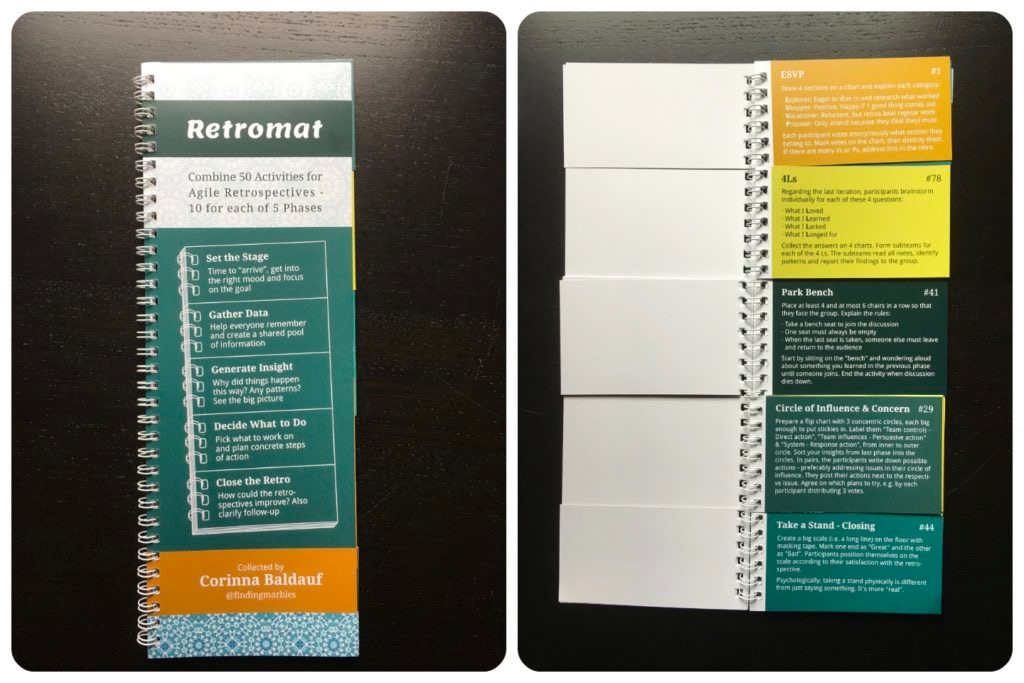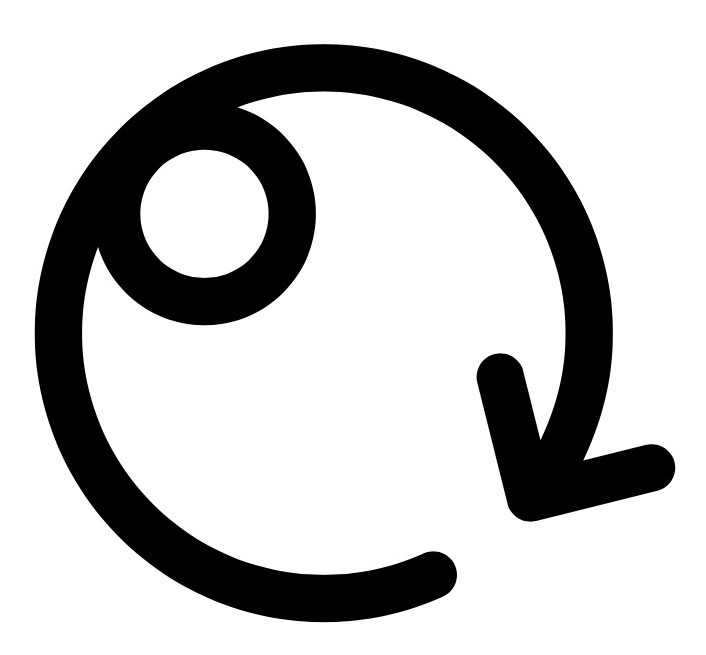11 ideas to spice up your retrospective
This week I got a question from a colleague about the Scrum Retrospective. She’s Scrum Master of a team that for sure has room for improvement. But somehow, during the Retrospective nobody is really challenging each other and the burning issues aren’t discussed. Therefore the Retrospective often results in defining only small improvements.
So the question I want to discuss in this blog post is:
How to spice up your Retrospective?

I’ll share some formats that helped me with this question. If you’ve got any other ideas: sharing them is appreciated! Please note: the ideas with an asterisk have a description taken from the Retromat book by Corinna Baldauf.
1. The Feedback Game
The feedback game gives you an insight on your own personality and can be used to start an in depth conversation about each other’s attitude and behaviour. By using 140 cards with different characteristics you’ll be able to find an answer on questions like:
What are my qualities?
How do others perceive me?
What are qualities that I want/need to improve?
You can use the game for team building, appraisals, coaching and counseling, career planning, development and personal strengths. I’ve used it for giving and receiving feedback within the Scrum teams I’ve coached. The game helped in creating a clear image of how a person sees him-/herself and how someone else perceives that person. It also clarifies how well a team can assess qualities of other team members. I’ve noticed the team found it quite difficult to assess each other and this resulted in some nice conversations.
In this blog post you’ll find a more detailed description.
2. Discuss the Team’s Purpose
A purpose is the reason for which something is done or created or for which something exists. A clear, inspiring and ambitious purpose will invite the team to continuously improve themselves. Without a purpose, the team is at risk to become Scrum zombies that only „mechanically“ attend the Retrospective.
3. The Constellation Game*
Place a sphere in the middle of free space and gather the team around it. The sphere represents the center of agreement. Move toward the center if you agree and outwards if you don’t. Read out statements like:
I feel I can talk openly in this Retrospective
I am happy with the quality of our code
I feel I’m part of the best team ever
Afterwards, ask which constellations were surprising
4. Why Retrospectives?*
Go back to the roots and start the Retrospective by asking „Why are we having Retrospectives?“. Write down all answers and then post them for everyone to see. You might be surprised.
5. Expectations*
Each team member gets a sheet of paper that’s blank on the lower half and has 2 sections in the top half:
What my team mates can expect from me
What I expect from my team mates
Participants fill out the top half for themselves. Afterwards they pass their paper to the left and review the sheet they got. In the lower half they write what they personally expect from the author, sign it and pass it on. After a full round, review and discuss expectations.
6. Writing the Unspeakable*
Are there unspoken taboos holding back the team? Stress confidentiality. Announce the activity as silent and that all „evidence“ will be destroyed afterwards. Hand each participant a sheet of paper to write down the biggest unspoken taboo in the company or team. When everyone’s done, they pass their paper to their left neighbours. The neighbours read them and may add comments. Papers are passed on until they return to their authors for a last review. Then all pages are ceremoniously shredded. Use with caution!
7. Remember the Future*
Introduce this scenario: „Imagine you could time travel to the end of the next iteration. You learn that it was the best, most productive iteration yet! How do your future selves describe it? What do you see and hear?“ Give the team a little time to imagine this and jot down some keywords. Then let everyone describe their vision of a perfect iteration. Follow up with „What changes did we implement that resulted in such a productive and satisfying future?“ Write down the answers on cards for the next phase.
8. Circle of Influence & Concern*
Prepare a flip chart with 3 concentric circles, each big enough to put stickies in. Label them from inner to outer circle:
Team controls – direct action
Team influences – persuasive action
System – response action
Sort your insights from last phase into the circles. In pairs, the participants write down possible actions – preferably addressing issues in their circle of influence. They post their actions next to the respective issue. Agree on which plans to try, e.g. by each participant distributing 3 votes.
9. Follow Through*
Let everyone draw an emoticon of their current mood on a sticky note. Then draw a scale on a flip chart, labeled „Probability we’ll implement our action items“. Mark „0%“ on the left and „100%“ on the right. Ask everyone to place their sticky according to their level of confidence in their follow through as a team. Discuss interesting results such as low probability or bad mood.
10. Choose a Different Location
Choosing a different location for the Retrospective might do wonders. Leave the office for once. Choose for example a coffee bar, public park or even a boat as the location. A completely different environment really helps the team with brainstorming and defining out-of-the-box ideas.
11. Ask Someone Else to Facilitate the Retrospective
Although the Scrum Master should support the team to continuously improve themselves, this doesn’t automatically mean (s)he always the Retrospectives facilitator. I’ve got good experiences with asking other team members to think of Retrospective formats and host the session. It prevents the Retrospective to become the „Scrum Master Show“ and gives you the opportunity to act more as a team member from within.
Closing
In this blog post I’ve shared some ideas on how to spice up the Retrospective. For sure there are lots of other formats that can be used. For example by using team assessments/checklists or creating a team manifesto. But because my favourite number is 11, I’ve only shared 11 ideas… If you’ve got any other ideas that worked really well: please share them within the commend section below.
Source: https://www.scrum.org/resources/blog/11-ideas-spice-your-retrospective

